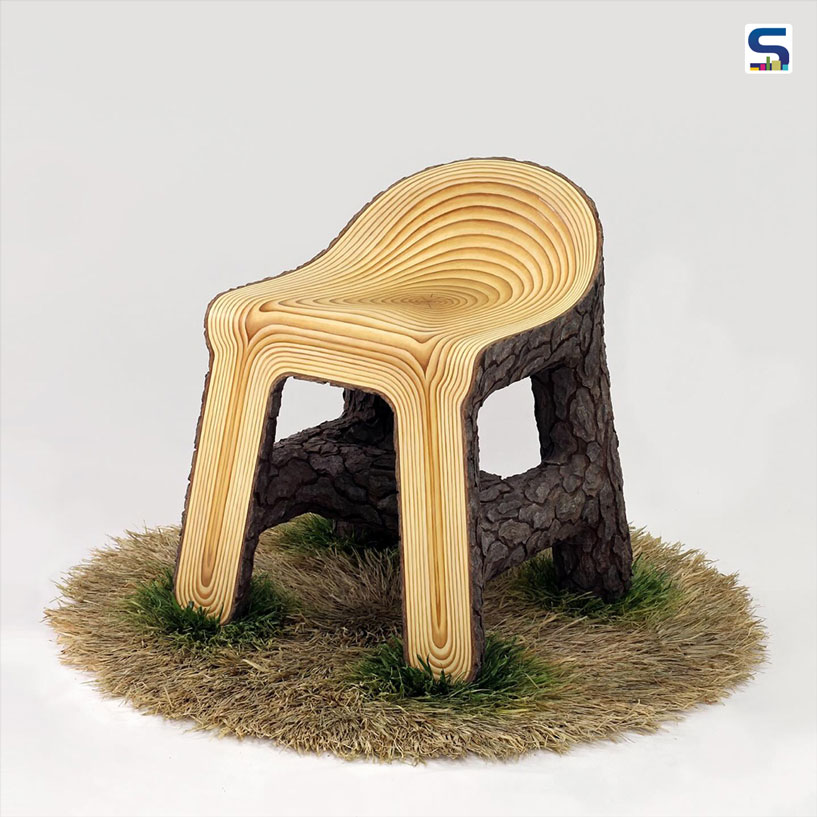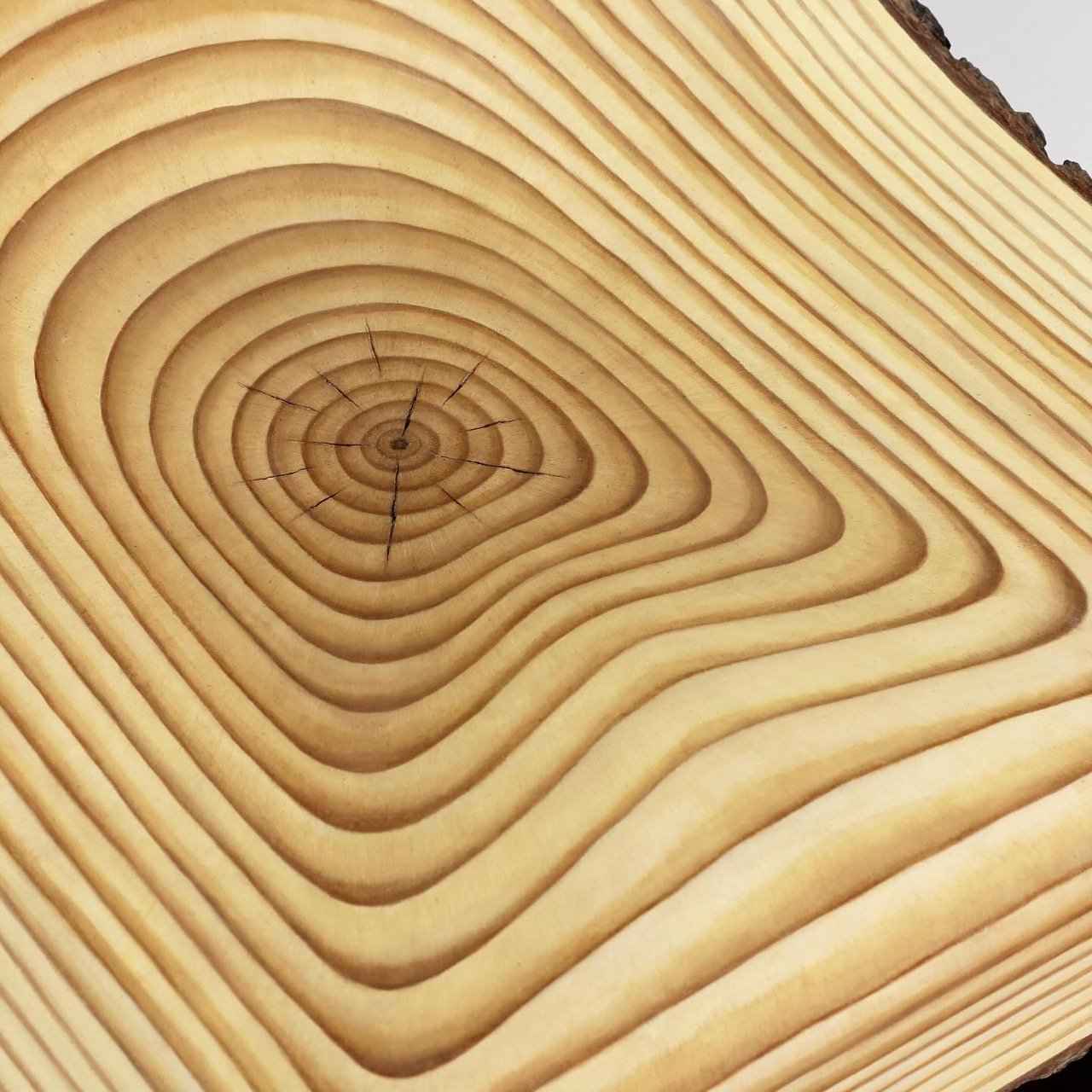
The Wood Chair on Grass (2025) has marked a significant evolution in artist Joyce Lin’s ongoing Wood Chair series. Made from oil paint, epoxy clay, plywood, wood and raffia fibres, the work reflects a carefully cuarted blend between the organic and the handmade use of skills and materials. In the series, every surface is designed to be both seen and felt. It aims to create an interplay between illusion and tactility that defines the piece’s quiet presence. Know more about it on SURFACES REPORTER (SR).

The grassy base is not living vegetation but a meticulously latch-hooked rug composed of dyed and hand-painted raffia.
Although the chair initially appears as a simple, with its low-back saddle form that is gently positioned on what resembles a lush patch of grass, the work defies this first impression. A closer look reveals that nothing in the composition is natural in the literal sense. The grassy base is not living vegetation but a meticulously latch-hooked rug composed of dyed and hand-painted raffia. Each fibre copies the colour gradations, density and the movement of real grass, thus giving the sense of blades shifting gently in sunlight, despite remaining permanently still. This intentional contrast between the expectation of nature and the reality of crafted material gives the piece its conceptual strength. According to the Lin, it invites viewers to question what they see and consider the ways in which human beings imitate nature in pursuit of beauty, comfort or meaning.

One of the most striking elements of the work is the bark-like detail sculpted from epoxy clay and carefully painted with oils.
The seat is inspired by the look of pinewood. Instead of simply imitating timber, the artist transformed the wooden surface into a study of character and imperfection. Hand-carved cracks create an impression of age and use, lending the chair a presence that feels almost animate. Varying treatments of varnish, with alternating matte and satin finishes, shift under changing light conditions. One of the most striking elements of the work is the bark-like detail sculpted from epoxy clay and carefully painted with oils. According to the artist, this bark texture represents some of their most accomplished three-dimensional work to date. It clings to the chair’s edges in a way that suggests growth rather than construction, as if the chair emerged from the earth rather than being assembled.

Hand-carved cracks create an impression of age and use, lending the chair a presence that feels almost animate.
The raffia fibres bring softness, irregularity and an element of chance, while plywood and carved wood offer structure and stability. Their combination feels both contemporary and deeply connected to older craft traditions. The interplay of textures, right from smooth varnished grain, rough bark to soft fibre, create a multisensory composition that expresses the artist’s evolving material understanding.
Image credit: Joyce Lin